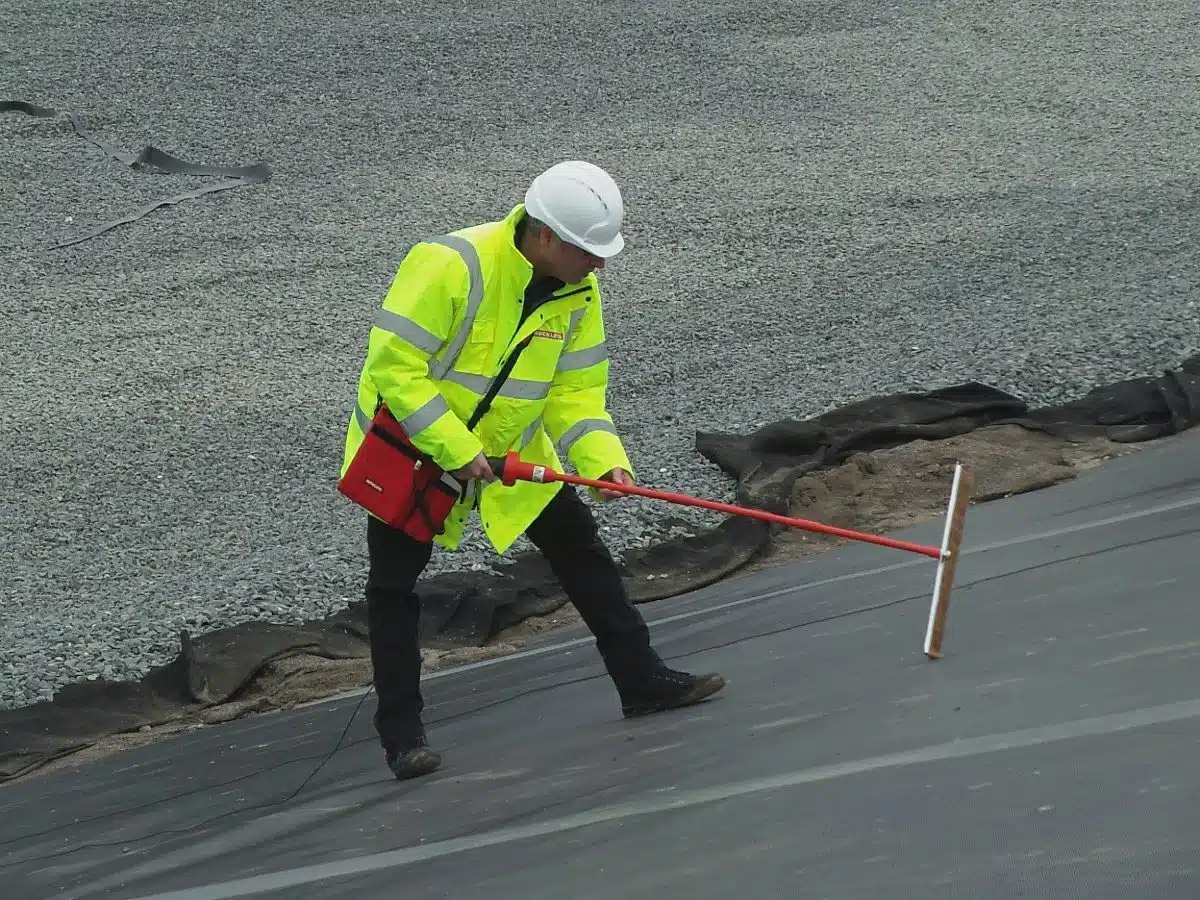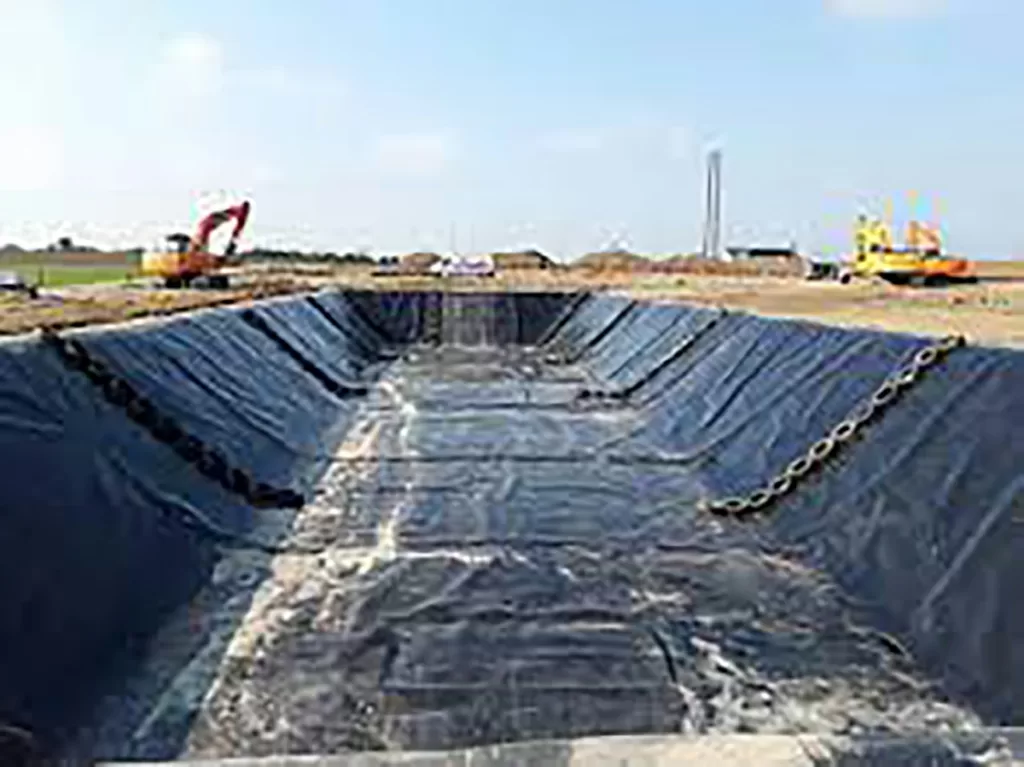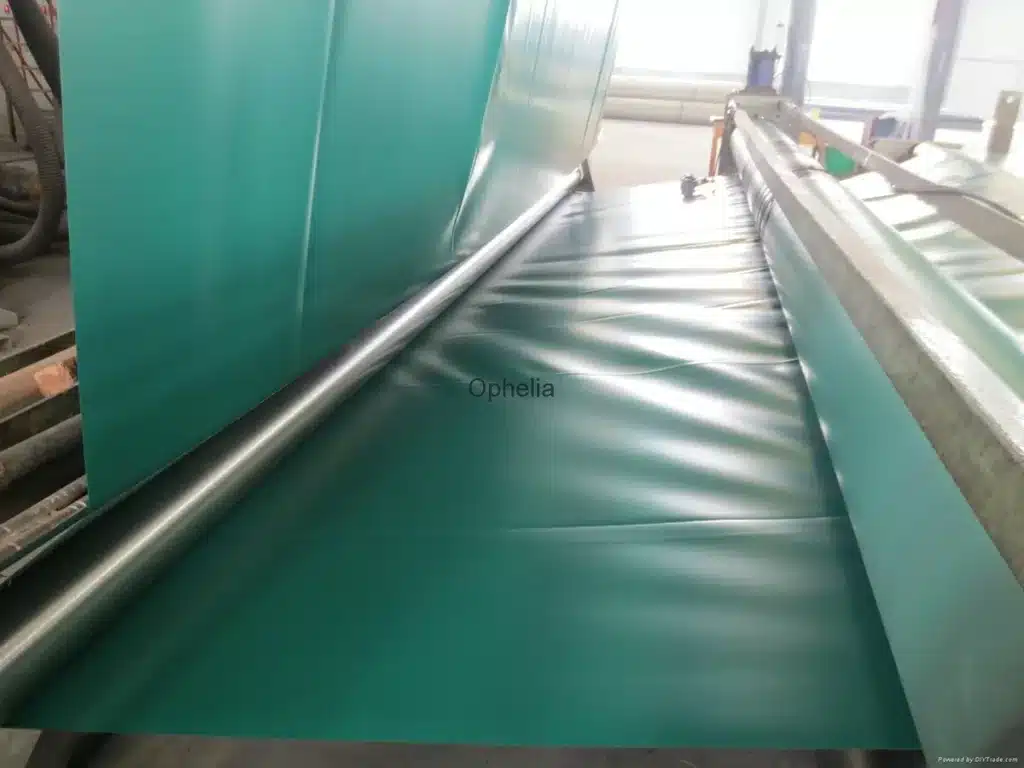+86-159 9860 6917
info@geofantex.com
geofantex@gmail.com
+86-400-8266163-44899
High-density polyethylene (HDPE) geomembranes are widely recognized for their robustness, chemical resistance, and impermeability, making them an indispensable material in environmental, hydraulic, and civil engineering applications. However, despite their resilience, these geomembranes are not immune to degradation over time. Understanding the degradation process of HDPE geomembranes is crucial for predicting their lifespan, maintaining environmental safety, and ensuring the integrity of critical infrastructures. This article delves into the degradation dynamics of HDPE geomembranes, exploring their longevity, degradation rates, and the effects of environmental factors such as sunlight and chlorine exposure.

How long does it take for HDPE to degrade?
High-density polyethylene (HDPE) is a type of plastic known for its durability and resistance to various environmental factors. The degradation process of HDPE can be broken down into several key stages:
- Initial Exposure: HDPE begins to degrade when exposed to environmental factors such as UV radiation, oxygen, and mechanical stress.
- Photodegradation: UV radiation causes the breaking of polymer chains in HDPE, leading to the formation of free radicals.
- Thermo-oxidative Degradation: Exposure to oxygen and heat further breaks down the polymer chains, resulting in the formation of smaller molecules and a loss of mechanical properties.
- Biodegradation: Microorganisms can slowly break down the smaller molecules formed during the earlier stages, although this process is very slow and limited.
Factors Influencing Degradation Rate
Several factors can influence the rate of HDPE degradation:
- UV Radiation: Higher exposure to sunlight accelerates the degradation process.
- Oxygen Availability: Increased oxygen levels enhance oxidative degradation.
- Temperature: Higher temperatures speed up the degradation process.
- Mechanical Stress: Physical stress and wear can cause micro-cracks, increasing the surface area exposed to degradation factors.
- Environmental Conditions: Moisture, pollutants, and the presence of microorganisms also affect the degradation rate.
Estimated Timeframe for Degradation
The complete degradation of HDPE can take an exceptionally long time due to its inherent resistance to environmental factors. Generally, the estimated timeframe for HDPE to fully degrade can range from:
- 50 to 100 years: In landfills or environments with limited exposure to degrading factors.
- 100 to 500 years or more: In marine or deep landfill environments where degrading conditions are not optimal.
HDPE’s degradation process is slow and influenced by various environmental factors. While initial breakdown can occur relatively quickly under the right conditions, complete degradation into harmless byproducts can take several decades to centuries.
What is the degradation rate of HDPE?
The degradation rate of HDPE geomembranes is a complex variable that depends on multiple factors, including the quality of the HDPE resin, the presence of antioxidants within the material, environmental conditions, and exposure to UV light and chemicals. Under typical environmental conditions, the degradation rate is relatively slow, often taking decades to manifest significant material changes. Quantitatively, this rate can be challenging to pinpoint due to the myriad of influencing factors and the different methodologies used to assess degradation.

Does HDPE degrade in sunlight?
Yes, HDPE geomembranes can degrade under prolonged exposure to sunlight. With the extension of time and the increase of UV intensity, HDPE will gradually degrade. Ultraviolet (UV) radiation from the sun can break down the polymer chains in HDPE, leading to a reduction in its mechanical properties, such as tensile strength and elongation at break. Manufacturers often incorporate UV stabilizers and antioxidants into the geomembrane to mitigate this degradation. Nonetheless, even with these protective measures, continuous direct exposure to sunlight can eventually lead to significant material degradation, emphasizing the importance of proper cover or UV protection in the design and installation of HDPE geomembrane systems.
Does chlorine degrade HDPE?
Chlorine, particularly in its concentrated form or as part of a reactive chemical compound, can degrade HDPE geomembranes. The extent of degradation depends on the concentration of chlorine, the temperature, and the duration of exposure. It is noteworthy that HDPE has excellent resistance to chlorinated water at 20 degrees Celsius and conditional or limited resistance at 60 degrees Celsius. In water treatment applications, where chlorine is commonly used as a disinfectant, HDPE geomembranes can experience accelerated aging, leading to embrittlement and cracking over time, especially at higher temperatures. This degradation mechanism is primarily due to the oxidative reactions between chlorine and the polymer chains of the HDPE, highlighting the need for careful consideration of material compatibility in chemically aggressive environments.
HDPE geomembranes are a cornerstone in the construction of environmentally secure and durable containment systems. While their resilience and chemical resistance make them a preferred choice in many applications, understanding the nuances of their degradation is essential for maximizing their lifespan and effectiveness. Factors such as sunlight exposure and contact with aggressive chemicals like chlorine can accelerate the degradation process, underscoring the importance of comprehensive planning and material selection. By acknowledging and mitigating these degradation pathways, engineers and project managers can ensure the long-term performance and reliability of HDPE geomembrane installations, safeguarding both our environment and infrastructure.



Get Free Sample
We’ll respond as soon as possible(within 12 hours)






















